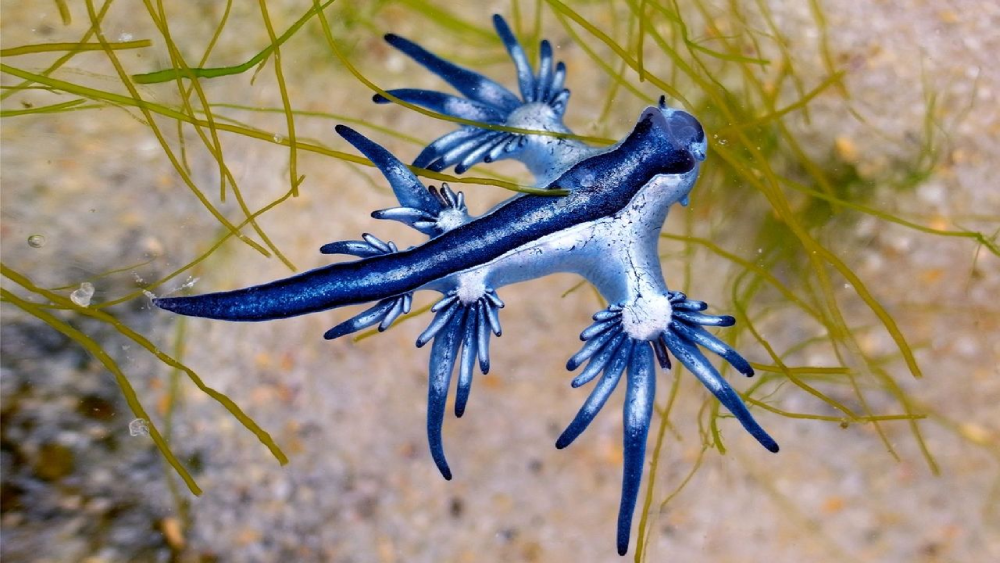Origins and Cultural Significance
The origins of the Blue Dragon have connections with ancient civilizations, particularly in East Asia. There dragons hold a prominent place in mythology. In Chinese culture, the dragon is a symbol of imperial power, representing strength, prosperity, and also good fortune. The color blue, often associated with the heavens and celestial beings, imbues the Blue Dragon with a sense of divine authority and wisdom.
In Japanese folklore, the Blue Dragon, is popular as “Seiryu,” is one of the four celestial guardians, along with the White Tiger, Vermilion Bird, and Black Tortoise. Each guardian is associated with a cardinal direction and a season, and Seiryu presides over the east and the spring. As a guardian deity, Seiryu protects the land and its people, bringing rain and ensuring bountiful harvests.
The Blue Dragon also appears in the mythology of other cultures, such as in ancient Mesopotamia, where it is the Tiamat, the primordial goddess of the sea, often portrayed as a serpentine creature with blue scales. In European folklore, dragons are often portrayed as malevolent creatures to be slain by heroes, yet even here, the allure of the Blue Dragon persists, representing the untamed forces of nature and the unknown.

Characteristics and Symbolism
Depictions of the Blue Dragon vary widely across different cultures and artistic interpretations, but certain characteristics remain consistent. Typically, the Blue Dragon is a serpentine creature with scales of azure hue, adorned with horns, claws, and also sometimes wings. Its eyes may glow with an otherworldly light, and its breath possesses the power of storms, capable of summoning thunder and lightning.
Symbolically, the Blue Dragon embodies a multitude of meanings, reflecting the complexities of human perception and experience. On one level, it represents the primal forces of nature, embodying the elements of water and air. As a celestial guardian, it symbolizes protection and guidance, also offering solace to those in need. Yet, like all dragons, this one also embodies the duality of existence, representing both the creative and destructive forces of the cosmos.
In Chinese philosophy, the dragon has associations with the concept of “Qi,” the life force that permeates all living beings. The Blue Dragon, with its association with water, symbolizes the flow of Qi, the cyclical nature of existence, and the balance between yin and yang. In this sense, it serves as a reminder of the interconnectedness of all things and the eternal dance of creation and destruction.
Literary and Cultural Depictions
The Blue Dragon has left an indelible mark on literature, art, and popular culture throughout the ages. From ancient scrolls and tapestries to contemporary novels and films, its image is immortal in myriad forms, captivating audiences with its mystique and allure.
In classical Chinese literature, such as the “Classic of Mountains and Seas” and the “Journey to the West,” the Blue Dragon appears as a powerful and benevolent being, aiding heroes on their quests and imparting wisdom to the worthy. In modern times, authors such as Ursula K. Le Guin and Terry Pratchett have drawn inspiration from the myth of the Blue Dragon, incorporating it into their own fantastical worlds.
In the realm of cinema and animation, this animal is alive in stunning detail, from the animated films of Studio Ghibli to the epic fantasies of Hollywood. Whether portrayed as a fearsome antagonist or a wise mentor, its presence never fails to captivate audiences, stirring the imagination and inviting viewers to ponder the mysteries of the unknown.
Conclusion
In the tapestry of myth and legend, the Blue Dragon stands as a timeless symbol of power, wisdom, and transcendence. Across cultures and centuries, its image has endured, weaving its way into the collective consciousness of humanity. So, as we gaze upon its azure form, we are reminded of the boundless possibilities of the imagination and the enduring quest for meaning in the vast expanse of existence. The Blue Dragon beckons us to venture forth into the realm of myth and mystery, where dragons dwell and dreams take flight.









